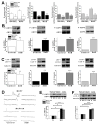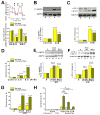Selective Vulnerability of Cancer Cells by Inhibition of Ca(2+) Transfer from Endoplasmic Reticulum to Mitochondria
- PMID: 26947070
- PMCID: PMC4794382
- DOI: 10.1016/j.celrep.2016.02.030
Selective Vulnerability of Cancer Cells by Inhibition of Ca(2+) Transfer from Endoplasmic Reticulum to Mitochondria
Erratum in
-
Selective Vulnerability of Cancer Cells by Inhibition of Ca(2+) Transfer from Endoplasmic Reticulum to Mitochondria.Cell Rep. 2016 Apr 5;15(1):219-220. doi: 10.1016/j.celrep.2016.03.045. Cell Rep. 2016. PMID: 27050774 No abstract available.
-
Selective Vulnerability of Cancer Cells by Inhibition of Ca2+ Transfer from Endoplasmic Reticulum to Mitochondria.Cell Rep. 2025 Jun 24;44(6):115869. doi: 10.1016/j.celrep.2025.115869. Epub 2025 Jun 5. Cell Rep. 2025. PMID: 40478732 Free PMC article. No abstract available.
Abstract
In the absence of low-level ER-to-mitochondrial Ca(2+) transfer, ATP levels fall, and AMPK-dependent, mTOR-independent autophagy is induced as an essential survival mechanism in many cell types. Here, we demonstrate that tumorigenic cancer cell lines, transformed primary human fibroblasts, and tumors in vivo respond similarly but that autophagy is insufficient for survival, and cancer cells die while their normal counterparts are spared. Cancer cell death is due to compromised bioenergetics that can be rescued with metabolic substrates or nucleotides and caused by necrosis associated with mitotic catastrophe during their proliferation. Our findings reveal an unexpected dependency on constitutive Ca(2+) transfer to mitochondria for viability of tumorigenic cells and suggest that mitochondrial Ca(2+) addiction is a feature of cancer cells.
Copyright © 2016 The Authors. Published by Elsevier Inc. All rights reserved.
Figures







Comment in
-
Onco-IP3Rs Feed Cancerous Cravings for Mitochondrial Ca(2.).Trends Biochem Sci. 2016 May;41(5):390-393. doi: 10.1016/j.tibs.2016.03.006. Epub 2016 Apr 7. Trends Biochem Sci. 2016. PMID: 27068804
References
-
- Andrae U, Singh J, Ziegler-Skylakakis K. Pyruvate and related alpha-ketoacids protect mammalian cells in culture against hydrogen peroxide-induced cytotoxicity. Toxicol Lett. 1985;28:93–98. - PubMed
-
- Armstrong CT, Anderson JL, Denton RM. Studies on the regulation of the human E1 subunit of the 2-oxoglutarate dehydrogenase complex, including the identification of a novel calcium-binding site. Biochem J. 2014;459:369–381. - PubMed
-
- Bayley JP, Devilee P. Warburg tumours and the mechanisms of mitochondrial tumour suppressor genes. Barking up the right tree? Curr Opin Genet Dev. 2010;20:324–329. - PubMed
Publication types
MeSH terms
Substances
Grants and funding
LinkOut - more resources
Full Text Sources
Other Literature Sources
Miscellaneous

